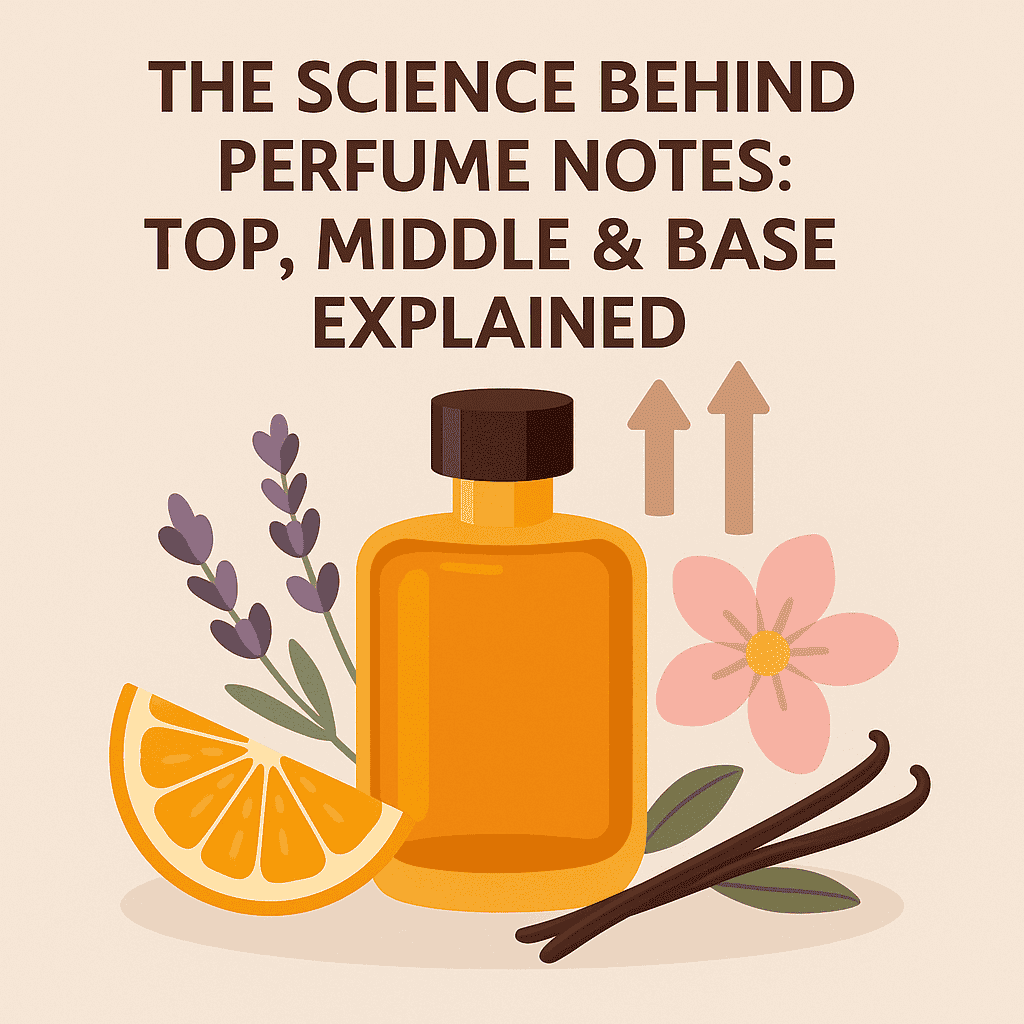Ever wondered why a perfume smells different right after you spray it, and then changes after a while? That’s the magic of perfume notes at work.
Perfume is designed in layers — top, middle, and base notes — each revealing itself over time. Here's how they work together to create a complete olfactory experience.
- Top Notes: The First Impression
These are the initial scents you smell when you first spray a perfume. They are usually light, fresh, and volatile — meaning they evaporate quickly.
- Duration: 5–15 minutes
- Common notes: Citrus (lemon, bergamot), light herbs (mint, lavender), fruits (apple, berries)
Top notes grab your attention and set the stage.
- Middle Notes: The Heart of the Fragrance
Once the top notes fade, the middle notes take over. These are the true personality of the perfume and last longer than top notes.
- Duration: 20–60 minutes
- Common notes: Rose, jasmine, cinnamon, ylang-ylang, green tea
They provide the main character and connect the freshness of top notes with the richness of base notes.
- Base Notes: The Lingering Memory
These are the deepest and longest-lasting elements of a perfume. They provide depth, warmth, and staying power.
- Duration: Several hours
- Common notes: Vanilla, musk, sandalwood, patchouli, amber
Base notes emerge once the perfume has settled and help make it memorable.
- Why Notes Matter
Understanding notes can help you pick a fragrance that evolves the way you like:
- Love fresh and breezy scents? Focus on top and middle notes.
- Prefer warm and sensual? Look for strong base notes.
- Want a balanced all-day scent? Choose perfumes with harmony across all three layers.
Bonus Tip:
Try samples and give them time to settle before deciding. The real magic unfolds over time, not in the first sniff.
When you understand the science of perfume notes, you start to choose with your nose — and your heart.



